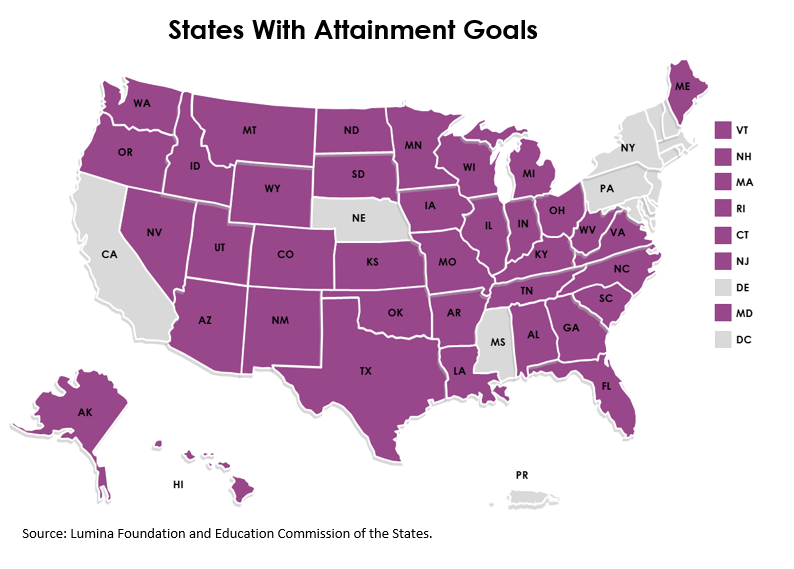Not a day goes by that I don’t read an article or hear an anecdote about how the future of the workforce requires more postsecondary credentials. By the year 2030, the U.S. could lose $1.7 trillion in revenue because of labor shortages. These shortages are due mostly to the lack of required skills and credentials needed for future jobs. This shortage gap varies depending on level of education, with estimated worker shortages of around 800,000 for those with an associate or some college and over 8.5 million for those with a bachelor’s or higher by 2030.
As states work toward aligning education to the workforce, the general perspective on the value of postsecondary education is a mixed bag. A public opinion poll from the Postsecondary Value Commission showed 89 percent of respondents think students should pursue education beyond high school, but only 39 percent think higher education is the right direction. Strada-Gallup consumer data reveals only 26 percent of working adults strongly agree their education is relevant to their work.
More education, specifically credentials in high-demand fields, seems to be the key to filling the skills shortage to come. As demand for more credentials increases, many states have set progressive attainment goals over the years in the hope of achieving a certain percentage of adults with a postsecondary credential (age ranges, goal percentages and credential types vary).
So how do states strategically align their postsecondary education goals with future workforce needs?
Some include pathways into the workforce that rely on strong partnerships and a landscape of workforce needs to ensure economic success. As of 2017, 41 states have established an attainment goal meeting the requirements set out by the Lumina Foundation. Since then, Michigan, North Carolina and West Virginia have set goals and implementation plans, with North Carolina outlining a path forward through its myFUTURENC report.
Both Colorado and Oregon aligned attainment goals with workforce needs through large-scale strategic planning. In 2017, Colorado published Colorado Rises, a strategic plan for postsecondary education in the state. The plan identifies four goals, including to increase credential completion to meet workforce needs. The goal specifically links credential production to identified high-demand fields, specifically highlighting the STEM fields. The plan also notes the growing shortage of teachers and makes it an area of focus to support teacher pipelines into local schools and districts.
In 2011, Oregon enacted ORS 340.014, creating the 40-40-20 education goal. The state clarified the goal in 2017 to focus on supporting young Oregonians through the P-20 education system. The state also established a new goal in 2018 for education and training of working adults, aiming to increase credential production by 300,000 and reduce attainment gaps. Oregon identified, through the goal, that 120,000 additional jobs will require postsecondary training/education between 2018 and 2030, tying the goal nicely to the Future Ready Oregon initiative. Oregon also uses a Workforce and Talent Development Board with the vision that “a strong state economy and prosperous communities are fueled by skilled workers, quality jobs, and thriving businesses.”
Many other states tie attainment goals to workforce needs in myriad ways, including:
- State longitudinal data systems that track individual mobility from education through the workforce.
- Strong partnerships across agencies and sectors.
- Statewide/governor initiatives aligning education and the workforce.
- Pathways for both degree and non-degree credentials.











